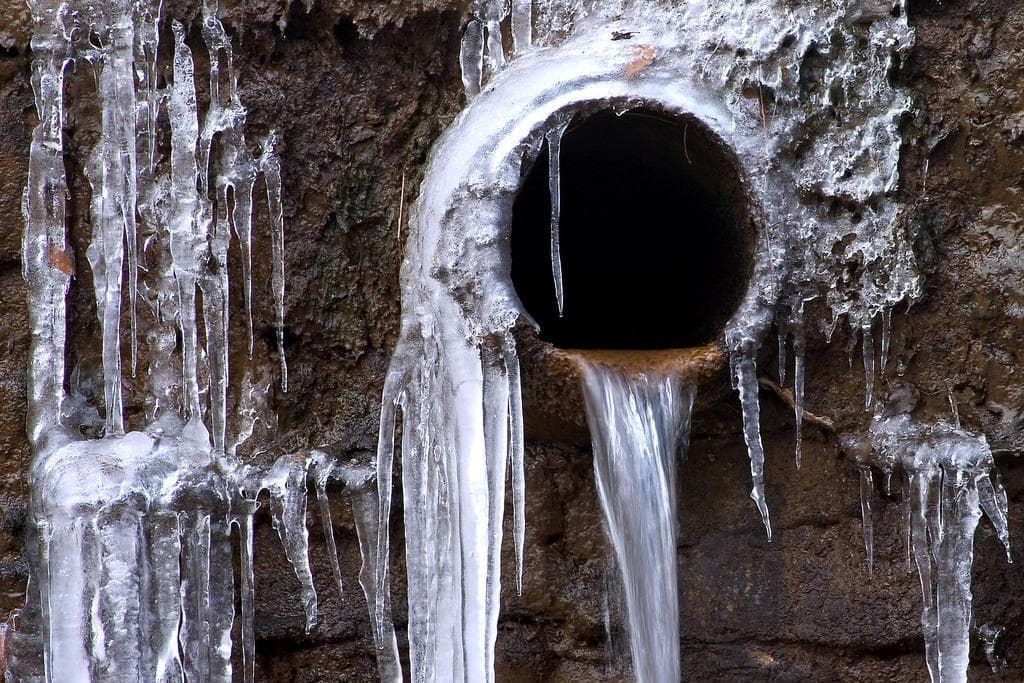Crucial Tips for Avoiding Frozen Plumbing in Winter Seasons
Crucial Tips for Avoiding Frozen Plumbing in Winter Seasons
Blog Article
What're your ideas with regards to Winter Plumbing Precautions: Preventing Frozen Pipes?

Cold weather can damage your pipes, specifically by freezing pipes. Right here's exactly how to avoid it from happening and what to do if it does.
Intro
As temperature levels drop, the risk of frozen pipes boosts, possibly leading to costly fixings and water damages. Recognizing how to prevent icy pipes is crucial for house owners in cold environments.
Avoidance Tips
Insulating at risk pipelines
Wrap pipes in insulation sleeves or utilize heat tape to protect them from freezing temperature levels. Focus on pipes in unheated or exterior areas of the home.
Home heating techniques
Keep indoor spaces appropriately heated up, especially locations with plumbing. Open cupboard doors to permit warm air to distribute around pipes under sinks.
Just how to recognize frozen pipelines
Try to find decreased water circulation from faucets, unusual odors or sounds from pipes, and visible frost on revealed pipes.
Long-Term Solutions
Architectural modifications
Take into consideration rerouting pipelines far from outside wall surfaces or unheated locations. Add added insulation to attics, basements, and crawl spaces.
Upgrading insulation
Buy premium insulation for pipes, attic rooms, and walls. Proper insulation assists preserve consistent temperature levels and decreases the danger of icy pipes.
Shielding Outside Pipes
Garden hoses and exterior taps
Separate and drain pipes yard pipes before winter season. Install frost-proof spigots or cover exterior taps with protected caps.
Recognizing Frozen Pipes
What causes pipelines to ice up?
Pipes ice up when subjected to temperatures listed below 32 ° F (0 ° C) for extended durations. As water inside the pipes ices up, it expands, putting pressure on the pipe wall surfaces and possibly creating them to burst.
Threats and damages
Frozen pipelines can bring about water system disruptions, building damage, and costly repair services. Ruptured pipelines can flood homes and trigger considerable architectural damages.
Indicators of Frozen Pipes
Recognizing icy pipes early can prevent them from breaking.
What to Do If Your Pipes Freeze
Immediate actions to take
If you suspect icy pipes, keep taps open to alleviate stress as the ice thaws. Utilize a hairdryer or towels soaked in warm water to thaw pipes slowly.
Conclusion
Stopping icy pipes needs proactive measures and fast actions. By comprehending the causes, indications, and preventive measures, property owners can safeguard their pipes during winter.
5 Ways to Prevent Frozen Pipes
Drain Outdoor Faucets and Disconnect Hoses
First, close the shut-off valve that controls the flow of water in the pipe to your outdoor faucet. Then, head outside to disconnect and drain your hose and open the outdoor faucet to allow the water to completely drain out of the line. Turn off the faucet when done. Finally, head back to the shut-off valve and drain the remaining water inside the pipe into a bucket or container. Additionally, if you have a home irrigation system, you should consider hiring an expert to clear the system of water each year.
Insulate Pipes
One of the best and most cost-effective methods for preventing frozen water pipes is to wrap your pipes with insulation. This is especially important for areas in your home that aren’t exposed to heat, such as an attic. We suggest using foam sleeves, which can typically be found at your local hardware store.
Keep Heat Running at 65
Your pipes are located inside your walls, and the temperature there is much colder than the rest of the house. To prevent your pipes from freezing, The Insurance Information Institute suggests that you keep your home heated to at least 65 degrees, even when traveling. You may want to invest in smart devices that can keep an eye on the temperature in your home while you’re away.
Leave Water Dripping
Moving water — even a small trickle — can prevent ice from forming inside your pipes. When freezing temps are imminent, start a drip of water from all faucets that serve exposed pipes. Leaving a few faucets running will also help relieve pressure inside the pipes and help prevent a rupture if the water inside freezes.
Open Cupboard Doors
Warm your kitchen and bathroom pipes by opening cupboards and vanities. You should also leave your interior doors ajar to help warm air circulate evenly throughout your home.

Do you really like more info about How to prepare your home plumbing for winter weather? Make a comment further down. We'd be glad to listen to your feelings about this page. We are looking forward that you visit us again in the future. For those who liked our page kindly make sure you remember to share it. Thanks so much for going through it.
Call Today Report this page